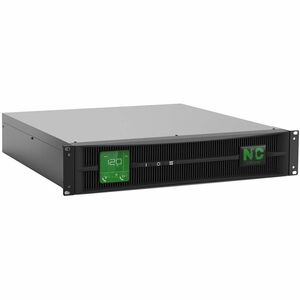Introduction
In the world of IT, decision-makers face numerous challenging choices that can significantly impact their budgets and operational efficiencies. One such critical decision involves the selection of battery backups for IT equipment and networking systems. When evaluating options for uninterruptible power supplies (UPS), understanding the environmental impact of the batteries involved is essential. This blog post will delve into the environmental concerns associated with lead-acid batteries, compare them to Lithium-Ion[BB1] alternatives, and highlight why N1C’s solutions offer a more sustainable and reliable choice.
What Are Lead-Acid Batteries?
Lead-acid batteries have been a staple in the world of backup power solutions for decades. Known for their affordability and reliability, these batteries are widely used in various industries, including education, retail, and hospitality systems supporting IT equipment. The basic construction of lead-acid batteries includes lead plates soaked in sulfuric acid, which produces electrical energy through a chemical reaction. Despite their long-standing presence, the environmental footprint of these batteries has become a growing concern.
Historical Context and Widespread Use
Lead-acid batteries have a rich history dating back to the mid-19th century. They played a crucial role in the development of early automotive technology and power storage solutions. Due to their cost-effectiveness and ability to provide reliable power, they became the go-to choice for many applications. However, over time, the environmental ramifications of their widespread use have become apparent.
Environmental Concerns of Lead-Acid Batteries
Despite their widespread use, lead-acid batteries pose significant environmental risks.
Toxic Heavy Metal
Lead is a toxic heavy metal that can have severe environmental and health consequences. Excessive lead exposure can lead to serious health issues such as brain damage, kidney dysfunction, and developmental problems in children. Improper disposal can lead to leakage into soil and water, resulting in contamination that harms plants, animals, and humans.
Improper Disposal and Recycling Issues
The improper disposal of lead-acid batteries exacerbates these risks. Ideally, these batteries should be recycled to minimize their environmental impact. However, not all disposal methods are created equal. In many developing countries, informal recycling processes are rampant, resulting in higher levels of contamination.
Fire Hazards
Lead-acid batteries are prone to catching fire, presenting dangers to the environment and human health. Fires release pollutants into the air, contributing to air quality issues and respiratory problems. These fires can erupt during both the use and recycling processes, making the handling of lead-acid batteries a risky affair.
The Advantages of Lithium-Ion Batteries
Lithium-Ion batteries present a more environmentally friendly alternative to lead-acid batteries. They offer several advantages that can reduce the overall environmental footprint associated with backup power systems.
No Lead Content
Lithium-Ion batteries don't contain lead, making them less hazardous to the environment and health. This key difference largely reduces the negative impacts on soil and water contamination that result from improper disposal practices.
Recyclability
Lithium-Ion batteries have recycling rates comparable to lead-acid batteries, but due to their longer lifecycle, they are processed less frequently, ultimately reducing the frequency of recycling needs. This means fewer resources are used over time to manage battery waste.
Lower Environmental Footprint
Lithium-Ion batteries are lighter, have a faster recharge rate, and offer higher temperature tolerance, which translates to lower carbon emissions and energy use. Their efficiency leads to less energy required for recharging and maintenance.
Extended Life Cycles
With a 15-year design life, N1C’s Lithium-Ion batteries reduce the volume of toxic materials sent to landfills. Longer lifecycle batteries reduce the frequency of replacements, subsequently decreasing waste and the environmental toll of manufacturing and disposal.
Healthier Work Environments
The absence of lead and the reduced need for frequent battery replacements contribute to healthier work environments. This is particularly critical for industries where workers are regularly exposed to battery handling and maintenance.
N1C’s Environmentally Friendly UPS Solutions
N1C is committed to providing innovative, sustainable power solutions that minimize environmental impact. Our focus on Lithium-Ion battery technology reflects our dedication to offering both operational excellence and environmental stewardship.
Smaller Footprint
N1C systems are designed to be lighter and more efficient, reducing overall carbon emissions. Our compact designs mean reduced material usage and more efficient transport logistics.
Enhanced Performance
The fast recharge rates and higher temperature tolerances mean less energy consumption and increased reliability. This ensures that organizations can maintain high operational efficiency while reducing their environmental footprint.
Long Life Cycles
Our systems are built to last, reducing the frequency of battery replacements and the associated environmental burdens. By extending the intervals between necessary replacements, we contribute to less waste and reduced resource consumption.
Sustainable Manufacturing Practices
Beyond battery technology, N1C is committed to sustainable manufacturing practices. We strive to minimize our carbon footprint throughout the production process from sourcing materials responsibly to optimizing our supply chain for efficiency.
Case Studies and Real-World Applications
Consider the example of an educational institution that decided to switch from lead-acid to Lithium-Ion batteries. Not only did the institution see a significant reduction in energy costs, but there was also a marked improvement in the performance of their IT systems. Additionally, the institution benefited from the reduced need for frequent battery maintenance, allowing IT staff to focus on more critical tasks.
Conclusion
Making informed decisions about battery backups doesn’t have to be challenging. By understanding the environmental impact of lead-acid batteries compared to Lithium-Ion alternatives, IT directors can make more sustainable and financially sound choices. N1C is here to provide authoritative guidance and cutting-edge solutions that benefit both your operations and the environment.



